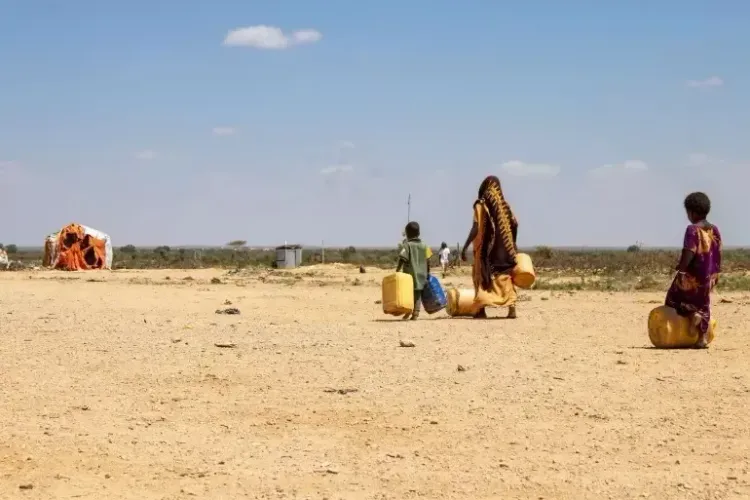Somalia and UN Agencies Urge Ongoing Funding to Prevent Hunger Crisis

Synopsis
Key Takeaways
- 4.4 million people at risk of hunger
- Only 12.4% of needed funding secured
- Urgent need for food and nutritional aid
- 1.7 million children face acute malnutrition
- Worsening drought and conflict exacerbating crisis
Mogadishu, Feb 27 (NationPress) Somalia, alongside United Nations agencies, has made an urgent plea for sufficient funding, cautioning that drought, conflict, and soaring food prices could drive 4.4 million people into hunger.
The Somali Disaster Management Agency (SoDMA), the Food and Agriculture Organization of the United Nations (FAO), the UN Office for the Coordination of Humanitarian Affairs (OCHA), the United Nations Children's Fund, and the UN World Food Program (WFP) issued a joint statement on Wednesday in Mogadishu, highlighting that acute funding shortages have led to the scaling back or complete elimination of life-saving programs.
"The UN is calling for immediate financial support to enhance food assistance, nutritional aid, water and sanitation services, and livelihood programs to lessen the impacts of the anticipated drought in Somalia," the statement emphasized.
As per the UN agencies, only 12.4 percent of the $1.42 billion needed for the Somalia 2025 Humanitarian Needs and Response Plan has been secured.
The agencies warned that without consistent funding for humanitarian efforts, Somalia—pushed to the edge of famine in 2022 due to severe drought, which claimed thousands of lives, half of whom were children—could again face escalating hunger.
Etienne Peterschmitt, the FAO representative for Somalia, stated that worsening drought, unpredictable rainfall, and ongoing conflict are diminishing livelihoods, pushing families further into crisis.
"Through early warning systems and proactive measures, we assist communities in preparing for shocks before they worsen, thereby mitigating the most severe effects of food crises," Peterschmitt noted.
The warning aligns with the recent Integrated Food Security Phase Classification (IPC) analysis released on Monday, indicating that 3.4 million people currently face crisis-level hunger or worse in Somalia, with projections estimating this number will rise to 4.4 million between April and June due to forecasted below-average Gu (April to June) rains.
Mohamuud Moallim, the SoDMA commissioner, remarked that the intensifying drought poses a significant threat to communities already enduring severe hardship and continuing conflict.
"These overlapping crises necessitate immediate, collective, and coordinated efforts to bolster Somalia's resilience and protect our most vulnerable populations," he added.
The UN indicated that the most affected households include those with low agricultural productivity who have exhausted their food supplies, internally displaced individuals, and pastoralists with limited livestock and low earnings from livestock sales, as reported by Xinhua.
Crispen Rukasha, head of the OCHA in Somalia, mentioned that repeated climate shocks, prolonged conflict, disease outbreaks, and widespread poverty have exacerbated the humanitarian situation in Somalia.
According to the IPC analysis, approximately 1.7 million children under five years old are at risk of acute malnutrition through December.
Of this group, 466,000 are facing severe acute malnutrition, marking a 9 percent increase compared to last year. Nearly two-thirds of the overall malnutrition burden is found in southern Somalia, where drought conditions and insecurity are most severe.
El-Khidir Daloum, WFP representative and country director in Somalia, remarked that recurrent challenges such as drought are placing millions of Somalis at risk of hunger due to rising food prices and dwindling harvests.
"Famine was narrowly averted in 2022 due to extensive humanitarian support, which is again essential for immediate assistance while longer-term solutions are implemented. However, funding shortages are compelling us to prioritize and cut back assistance at a critical juncture," Daloum stated.
The IPC findings further confirm that erratic rainfall in 2024 has led to poor crop yields, rapid depletion of pasture and water resources, flooding of food crops, and the displacement of hundreds of thousands.










